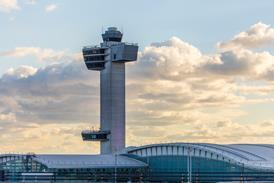Gulfstream says its test pilots and engineers invoked a "safe mode" control actuation system on a G650 prototype for more than 2h on 21 December, demonstrating the viability of the electrically powered backup technology.
Pilots of s/n 6001, one of five flight test aircraft taking part in the G650 ultra long-range business jet certification program, initially used the Parker Hannifin-built electrical backup hydraulic actuators (EBHAs) for primary flight control for single axis control. The test then progressed to full roll, pitch and yaw control through low and high speed conditions at a variety of altitudes and speeds, including five landings during the 3h 33min flight.
"It flew so well that unless pilots were told they were in backup actuation mode I don't think they would notice," says Gary Freeman, a Gulfstream test pilot taking part in the flight.
 |
|---|
©Gulfstream |
Using EBHAs, Gulfstream was able to design the G650 fly-by-wire (FBW) flight control system with a dual-redundant rather than triple-redundant hydraulic system, saving weight and cost while boosting safety.
The devices are connected to primary control surfaces (elevator, rudder and aileron) and outboard spoilers in parallel with traditional electro hydraulic servo actuators (EHSAs). While both actuators use pressurized fluid from an aircraft-centric hydraulic system with redundant pumps, the EBHA also contains its own electrically powered internal hydraulic fluid reservoir and motor pump, allowing for full flight control and a "get home" option in the event of a dual hydraulic system failure.
Gulfstream notes that a self-contained actuator could provide "an advantage" following "extremely rare failure scenarios, such as a rotor burst".
The company anticipates certification and entry-into-service for the business jet later this year.
Source: Flight International























